Growing Honeyberries at Home can seem daunting, but trust me, it’s more rewarding than you might think! Have you ever dreamed of stepping into your backyard and plucking sweet, tangy berries straight from the bush? Imagine the satisfaction of creating delicious jams, pies, or even just enjoying a handful of these unique fruits fresh off the vine. This isn’t just about gardening; it’s about connecting with nature and enjoying the fruits (literally!) of your labor.
Honeyberries, also known as Haskap berries, have a fascinating history, deeply rooted in the colder climates of Russia and Japan. For centuries, these hardy berries have been cherished for their resilience and exceptional nutritional value. They’re packed with antioxidants and vitamins, making them a superfood powerhouse right in your own backyard.
But why should you consider growing honeyberries at home? In today’s world, we’re all looking for ways to eat healthier, be more self-sufficient, and connect with the natural world. Honeyberries offer a fantastic opportunity to do just that. Plus, they’re relatively low-maintenance compared to other berry bushes, making them perfect for beginner gardeners and seasoned pros alike. This article will guide you through simple DIY tricks and hacks to ensure your honeyberry bushes thrive, providing you with a bountiful harvest year after year. Let’s get started and unlock the secrets to successfully growing these delicious and nutritious berries!
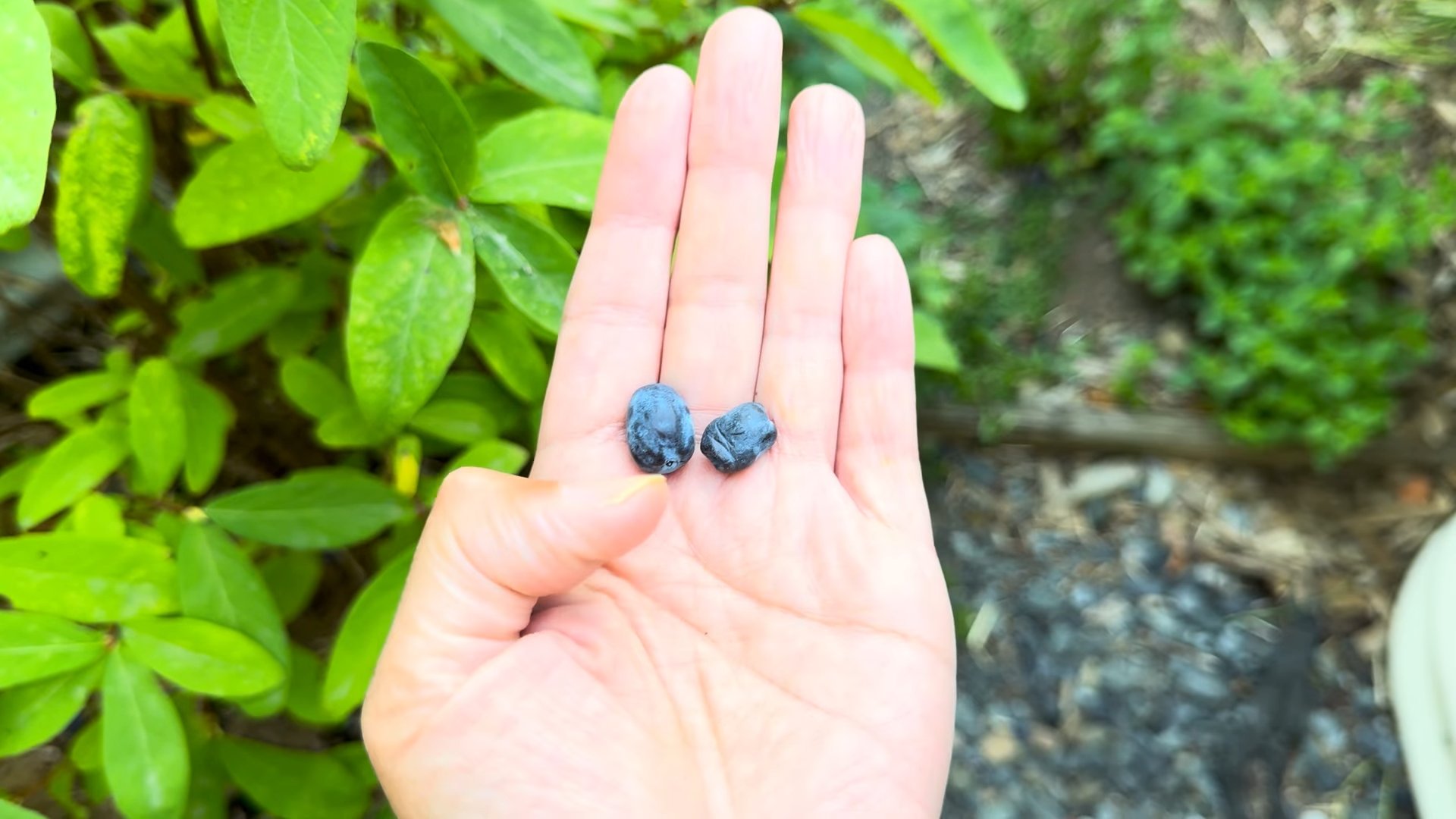
Growing Honeyberries at Home: A DIY Guide for Berry Lovers
Hey there, fellow gardening enthusiasts! I’m so excited to share my experience with growing honeyberries. These little powerhouses are not only delicious but also incredibly easy to cultivate, even if you’re a beginner like I was. Get ready to add a unique and rewarding fruit to your garden!
Choosing the Right Honeyberry Varieties
Before we dive into the nitty-gritty, it’s crucial to select the right honeyberry varieties for your region. Honeyberries need cross-pollination to produce fruit, so you’ll need at least two different varieties. Here’s what I learned:
* Consider your climate: Honeyberries are incredibly cold-hardy, thriving in zones 2-9. However, some varieties are better suited for warmer climates than others. Research varieties specifically recommended for your area.
* Pollination is key: Ensure the varieties you choose are compatible pollinators. Nurseries often provide pollination charts to help you select the right pairings. Some popular pairings include ‘Borealis’ and ‘Honeybee’, or ‘Aurora’ and ‘Indigo Gem’.
* Berry flavor and size: Honeyberries come in various flavors, from tart to sweet. Some varieties produce larger berries than others. Read descriptions carefully to find varieties that match your taste preferences. I personally love the slightly tart flavor of ‘Borealis’ mixed with the sweetness of ‘Honeybee’.
* Plant size: Honeyberry bushes can range in size from 3 to 6 feet tall and wide. Consider the available space in your garden when choosing varieties.
Preparing Your Honeyberry Planting Site
Honeyberries aren’t too fussy, but a little preparation goes a long way. Here’s how I prepped my planting site:
* Sunlight: Honeyberries thrive in full sun (at least 6 hours of direct sunlight per day). However, they can tolerate partial shade, especially in hotter climates.
* Soil: Honeyberries prefer well-drained soil with a slightly acidic pH (6.0-6.8). If your soil is heavy clay or sandy, amend it with compost or other organic matter to improve drainage and fertility.
* Spacing: Space honeyberry bushes 4-5 feet apart to allow for adequate air circulation and growth.
* Weed control: Remove all weeds and grass from the planting area. I like to use a layer of cardboard covered with mulch to suppress weeds.
Planting Your Honeyberry Bushes
Now for the fun part – planting! Here’s my step-by-step guide:
1. Dig the holes: Dig holes that are twice as wide and as deep as the root ball of your honeyberry bushes.
2. Amend the soil: Mix the soil you removed from the holes with compost or other organic matter. This will provide your honeyberries with essential nutrients.
3. Remove the bushes from their containers: Gently remove the honeyberry bushes from their containers, being careful not to damage the roots. If the roots are pot-bound, gently loosen them with your fingers.
4. Place the bushes in the holes: Place the honeyberry bushes in the holes, ensuring that the top of the root ball is level with the surrounding soil.
5. Backfill the holes: Backfill the holes with the amended soil, gently tamping it down to remove air pockets.
6. Water thoroughly: Water the newly planted honeyberry bushes thoroughly to help settle the soil and establish the roots.
7. Mulch: Apply a layer of mulch around the base of the bushes to help retain moisture, suppress weeds, and regulate soil temperature. I use wood chips, but straw or shredded leaves also work well.
Caring for Your Honeyberry Plants
Once your honeyberries are planted, they’re relatively low-maintenance. Here’s what I do to keep them happy and healthy:
* Watering: Water regularly, especially during dry periods. Honeyberries need consistent moisture to thrive. Aim for about 1 inch of water per week.
* Fertilizing: Fertilize in early spring with a balanced fertilizer, such as 10-10-10. Follow the instructions on the fertilizer package. Avoid over-fertilizing, as this can lead to excessive vegetative growth at the expense of fruit production.
* Pruning: Prune honeyberries in late winter or early spring, before new growth begins. Remove any dead, damaged, or crossing branches. Pruning helps to improve air circulation and sunlight penetration, which can increase fruit production. Honeyberries fruit on old wood, so avoid heavy pruning.
* Weed control: Keep the area around your honeyberry bushes free of weeds. Weeds compete with honeyberries for water and nutrients.
* Pest and disease control: Honeyberries are generally pest and disease resistant. However, they can occasionally be affected by aphids or powdery mildew. If you notice any problems, treat them with an appropriate organic pesticide or fungicide. I’ve found that a strong blast of water from the hose can often dislodge aphids.
Harvesting Your Honeyberries
The moment we’ve all been waiting for – harvesting! Honeyberries typically ripen in late spring or early summer, depending on the variety and your climate.
* Timing is key: Honeyberries are ripe when they turn a deep blue color and are soft to the touch. They should easily detach from the bush.
* Gentle harvesting: Gently pick the ripe honeyberries, being careful not to damage the bushes.
* Taste test: Taste a few berries to make sure they are ripe. Honeyberries can be tart if picked too early.
* Enjoy your harvest: Honeyberries can be eaten fresh, or used in jams, jellies, pies, and other desserts. They can also be frozen for later use. I love adding them to my morning smoothies!
Troubleshooting Common Honeyberry Problems
Even with the best care, you might encounter a few challenges. Here are some common problems and how I’ve dealt with them:
* Lack of fruit: The most common reason for lack of fruit is inadequate pollination. Make sure you have at least two different, compatible varieties planted near each other. Also, ensure that your honeyberries are getting enough sunlight.
* Small berries: Small berries can be caused by insufficient watering or fertilization. Make sure your honeyberries are getting enough water, especially during dry periods. Fertilize in early spring with a balanced fertilizer.
* Leaf discoloration: Leaf discoloration can be caused by nutrient deficiencies or fungal diseases. Test your soil to determine if there are any nutrient deficiencies. Treat fungal diseases with an appropriate organic fungicide.
* Bird damage: Birds love honeyberries as much as we do! Protect your bushes with netting to prevent birds from eating your harvest. I learned this the hard way after losing almost my entire first harvest to some very persistent robins.
Propagating Honeyberries
Want to expand your honeyberry patch? Here are a couple of ways to propagate them:
* Stem cuttings: Take stem cuttings in late spring or early summer. Dip the cuttings in rooting hormone and plant them in a well-draining potting mix. Keep the cuttings moist and in a shady location until they root.
* Layering: Bend a low-growing branch to the ground and bury a portion of it in the soil. Weigh it down with a rock or brick. Once the branch has rooted, you can sever it from the parent plant and transplant it to a new location.
Honeyberry Recipes to Try
Now that you’ve got a bountiful harvest, let’s talk about what to do with all those delicious berries! Here are a few of my favorite honeyberry recipes:
* Honeyberry Jam: This is a classic for a reason! Honeyberry jam is sweet, tart, and perfect on toast, scones, or even as a glaze for meats.
* Honeyberry Pie: A delicious twist on traditional berry pie. The slightly tart flavor of honeyberries pairs perfectly with a flaky crust.
* Honeyberry Smoothie: Add a handful of honeyberries to your favorite smoothie recipe for a boost of antioxidants and flavor.
* Honeyberry Crumble: A simple and satisfying dessert that showcases the natural sweetness of honeyberries.
* Honeyberry Syrup: Drizzle this syrup over pancakes, waffles, or ice cream for a special treat.
Final Thoughts
Growing honeyberries has been such a rewarding experience for me. They’re easy to care for, produce delicious and nutritious fruit, and are a unique addition to any garden. I hope this guide has inspired you to give them a try. Happy gardening!
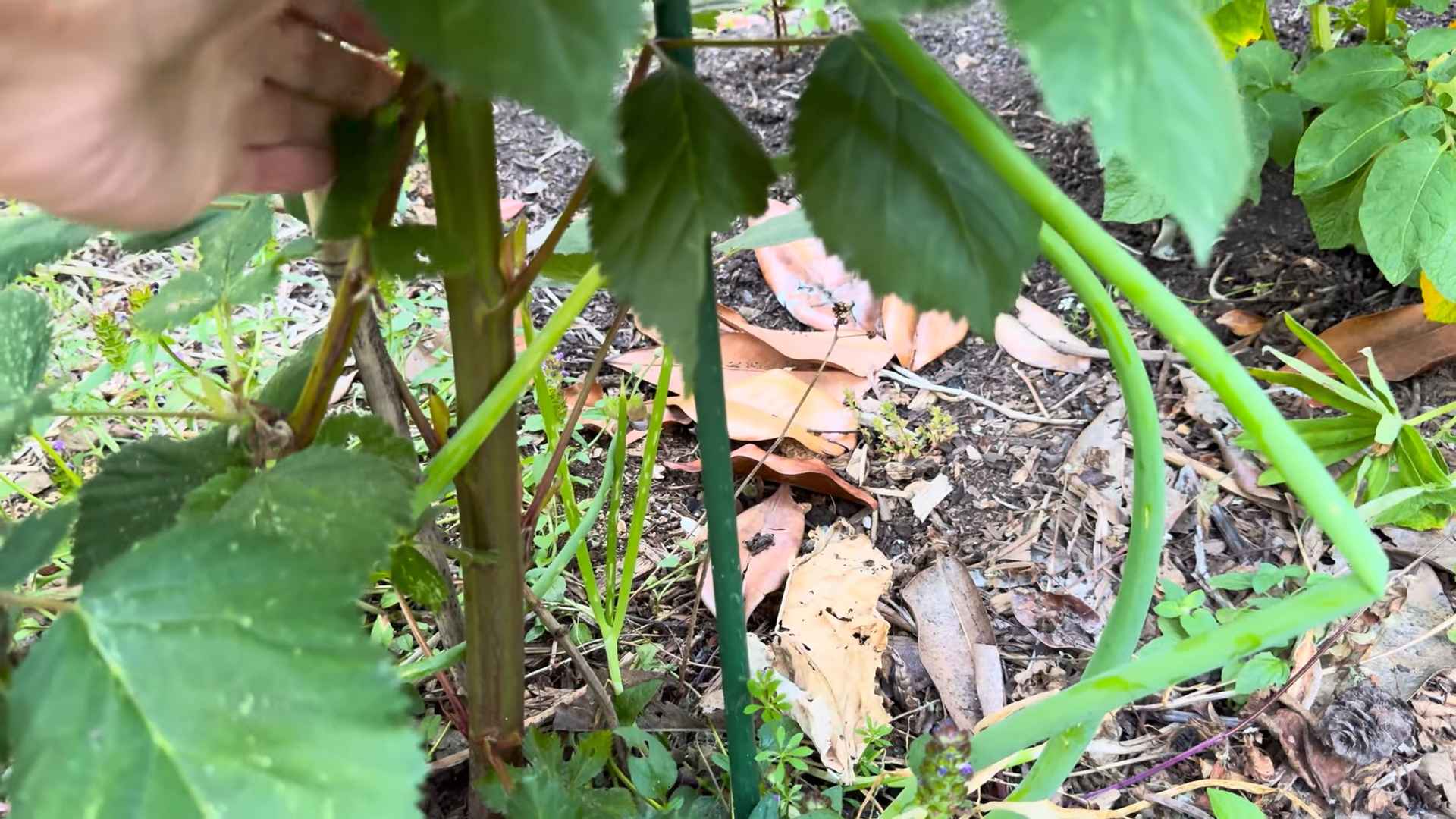
Conclusion
So, there you have it! Growing honeyberries at home is not just a gardening project; it’s an investment in your health, your garden’s biodiversity, and your culinary adventures. We’ve explored the ins and outs of cultivating these delightful berries, from selecting the right varieties to ensuring optimal growing conditions. The benefits are undeniable: a bountiful harvest of antioxidant-rich fruit, a beautiful and productive addition to your landscape, and the satisfaction of nurturing your own food source.
Why is this DIY trick a must-try? Because it empowers you to take control of your food supply, reduce your reliance on store-bought berries (often shipped long distances and treated with preservatives), and enjoy the unparalleled flavor of freshly picked honeyberries. Imagine stepping into your backyard and harvesting a bowlful of these tangy-sweet gems, knowing that you nurtured them from the very beginning. That’s a reward that no grocery store can offer.
But the journey doesn’t end with the harvest. Honeyberries are incredibly versatile in the kitchen. Beyond simply enjoying them fresh, consider transforming them into delectable jams, jellies, and preserves. Their unique flavor profile also makes them a fantastic addition to pies, muffins, and smoothies. For a truly unique treat, try incorporating honeyberries into savory dishes, such as sauces for grilled meats or as a vibrant component of a summer salad.
Variations and Suggestions:
* Vertical Gardening: If you’re short on space, consider training your honeyberry bushes to grow vertically against a trellis or fence. This not only maximizes space but also adds an attractive element to your garden design.
* Companion Planting: Enhance the health and productivity of your honeyberry bushes by planting beneficial companion plants nearby. Consider herbs like lavender or rosemary, which can deter pests and attract pollinators.
* Container Gardening: Honeyberries can also thrive in containers, making them an excellent option for balconies or patios. Just be sure to choose a large container with adequate drainage and use a high-quality potting mix.
* Experiment with Varieties: Don’t be afraid to experiment with different honeyberry varieties to find the ones that best suit your taste and growing conditions. Some varieties are sweeter, while others are more tart. Some are earlier ripening, while others are later.
* Honeyberry Wine or Liqueur: For the adventurous, consider using your honeyberry harvest to create homemade wine or liqueur. The unique flavor of honeyberries lends itself well to these types of beverages.
We are confident that you’ll find growing honeyberries at home to be a rewarding and enjoyable experience. The key is to start with a little research, choose the right varieties, and provide your bushes with the care they need to thrive.
So, what are you waiting for? Grab your gardening gloves, head to your local nursery, and embark on your honeyberry-growing adventure today! We encourage you to try this DIY trick and share your experiences with us. Let us know what varieties you’re growing, what challenges you’ve faced, and what delicious creations you’ve made with your harvest. Share your photos and stories on social media using #HomeGrownHoneyberries. We can’t wait to see what you create!
Frequently Asked Questions (FAQ)
What are the biggest challenges when growing honeyberries?
One of the most common challenges is ensuring proper pollination. Honeyberries require cross-pollination, meaning you need to plant at least two different varieties to get a good fruit set. Also, protecting the berries from birds can be tricky. Netting is often necessary, especially as the berries ripen. Soil drainage is also crucial; honeyberries don’t like soggy roots. Finally, be patient! It can take a few years for honeyberry bushes to reach their full production potential.
How often should I water my honeyberry bushes?
Watering frequency depends on your climate and soil type. Generally, honeyberry bushes need consistent moisture, especially during the growing season. Water deeply once or twice a week, ensuring the soil is moist but not waterlogged. Check the soil moisture regularly, and adjust your watering schedule accordingly. During hot, dry periods, you may need to water more frequently. Mulching around the base of the bushes can help retain moisture and reduce the need for frequent watering.
What kind of fertilizer do honeyberries need?
Honeyberries benefit from a balanced fertilizer applied in early spring. Look for a fertilizer with an NPK ratio (nitrogen, phosphorus, potassium) of around 10-10-10 or 12-12-12. Avoid over-fertilizing, as this can lead to excessive vegetative growth at the expense of fruit production. You can also amend the soil with compost or well-rotted manure to provide a slow-release source of nutrients. Organic fertilizers, such as bone meal and blood meal, can also be beneficial.
When is the best time to prune honeyberry bushes?
The best time to prune honeyberry bushes is in late winter or early spring, before new growth begins. Focus on removing any dead, damaged, or crossing branches. Pruning helps to improve air circulation and sunlight penetration, which can lead to better fruit production. As the bushes mature, you may also need to thin out some of the older branches to encourage new growth. Avoid heavy pruning, as this can reduce the following year’s harvest.
How do I protect my honeyberries from birds?
Birds are notorious for feasting on honeyberries, so protection is essential. The most effective method is to cover the bushes with netting. Choose a fine-mesh netting that will prevent birds from getting through. Secure the netting tightly around the bushes, ensuring there are no gaps. You can also use bird deterrents, such as reflective tape or scarecrows, but these are often less effective than netting.
Are honeyberries susceptible to any diseases or pests?
Honeyberries are generally quite resistant to diseases and pests, but they can occasionally be affected by aphids, powdery mildew, or fungal diseases. Monitor your bushes regularly for any signs of problems. If you notice aphids, try spraying them with a strong stream of water or using insecticidal soap. For powdery mildew or fungal diseases, improve air circulation by pruning and consider using a fungicide if necessary. Choose disease-resistant varieties to minimize the risk of problems.
How long does it take for honeyberry bushes to produce fruit?
Honeyberry bushes typically start producing fruit within one to two years of planting, but it may take three to five years for them to reach their full production potential. The amount of fruit produced will increase as the bushes mature. Be patient and provide your bushes with the care they need, and you’ll be rewarded with a bountiful harvest for many years to come.
Can I grow honeyberries in containers?
Yes, honeyberries can be grown successfully in containers, making them a great option for those with limited space. Choose a large container with good drainage, at least 15-20 gallons in size. Use a high-quality potting mix and water regularly. Container-grown honeyberries may need more frequent watering and fertilization than those grown in the ground. Also, be sure to protect the containers from extreme temperatures during the winter months.
What are the best honeyberry varieties to grow?
The best honeyberry varieties to grow depend on your climate and personal preferences. Some popular varieties include ‘Aurora’, ‘Honeybee’, ‘Borealis’, and ‘Indigo Gem’. ‘Aurora’ is known for its large, sweet berries. ‘Honeybee’ is a good pollinator for other varieties. ‘Borealis’ is a compact variety that is well-suited for smaller gardens. ‘Indigo Gem’ is a reliable producer with a good flavor. Research different varieties and choose those that are best suited to your growing conditions and taste preferences. Remember to plant at least two different varieties for cross-pollination.

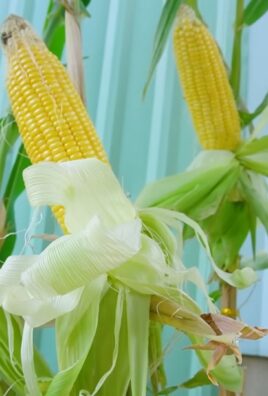
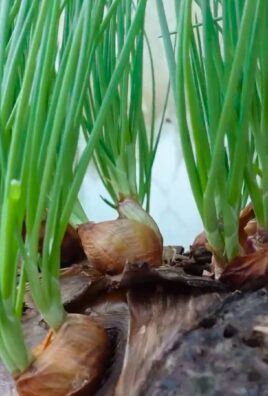
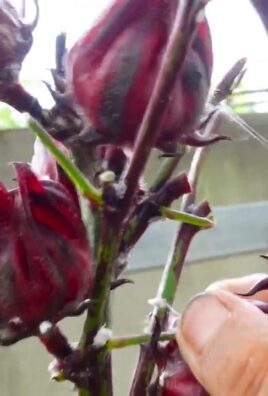
Leave a Comment